Family : Chaetodontidae

Text © Giuseppe Mazza

English translation by Mario Beltramini
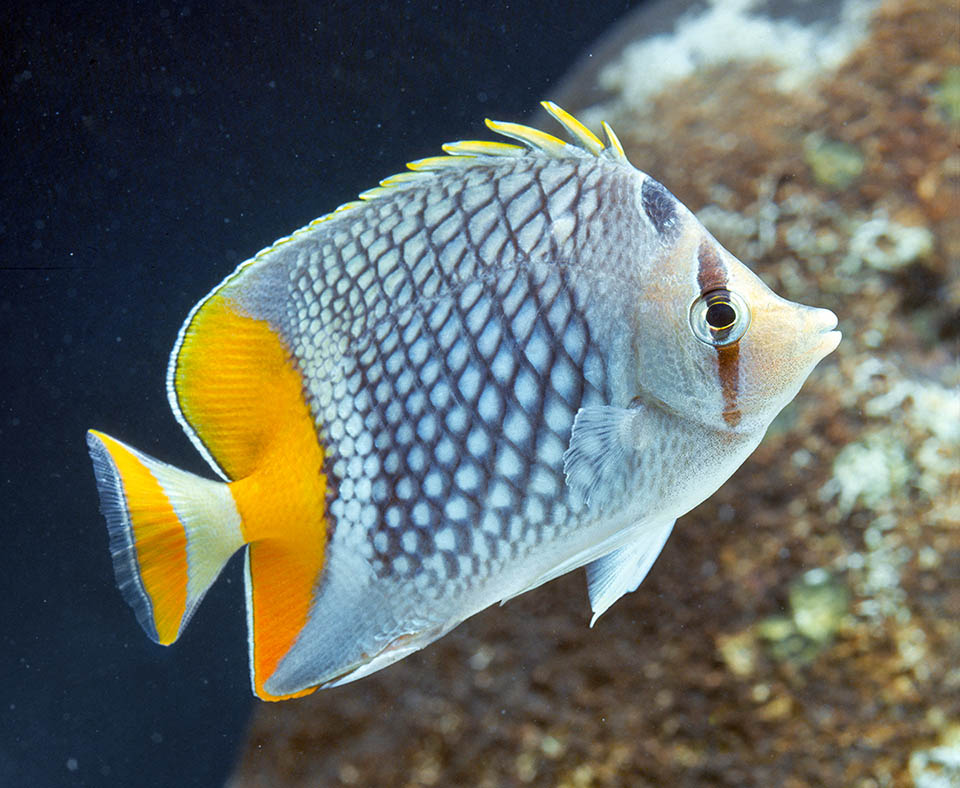
The Pearlscale butterflyfish (Chaetodon xanthurus) lives in the western Pacific Ocean tropical waters © Giuseppe Mazza
The Pearlscale butterflyfish (Chaetodon xanthurus Bleeker, 1857) belongs to the class of Actinopterygii, the ray-finned fishes, to the order of Perciformes and to the family of Chaetodontidae.
The name of the genus Chaetodon comes from the Greek “χαίτη” (khaite), hair and “ὀδούς” (odous), tooth, due to the “bristle-shaped teeth”.
The name of the species xanthurus comes from the Greek “ξανθός” (xanthos), yellow and “ουρά” (oura), tail, with reference to the colour of the tail and of the caudal fin.
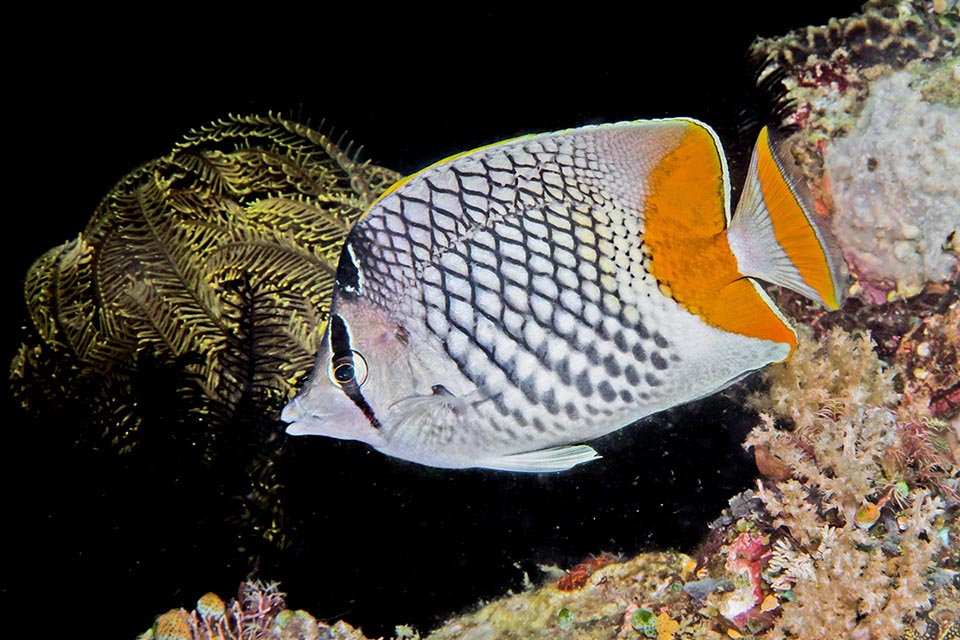
After some ichthyologists it should be a subspecies of Chaetodon madagaskariensis present instead in the Indian Ocean © Brian Cole
Zoogeography
It lives in the tropical waters of the western Pacific Ocean, from Indonesia to southern Japan, often cohabiting with the similar Chaetodon mertensii Cuvier, 1831, whilst in the Indian Ocean it is replaced by the Chaetodon madagaskariensis Ahl, 1923, much alike but without the typical checkered pattern.
For some zoologist it should be a subspecies of Chaetodon madagaskariensis along with the Chaetodon paucifasciatus Ahl, 1923 of the Red Sea and the Gulf of Aden, and the Chaetodon mertensii.
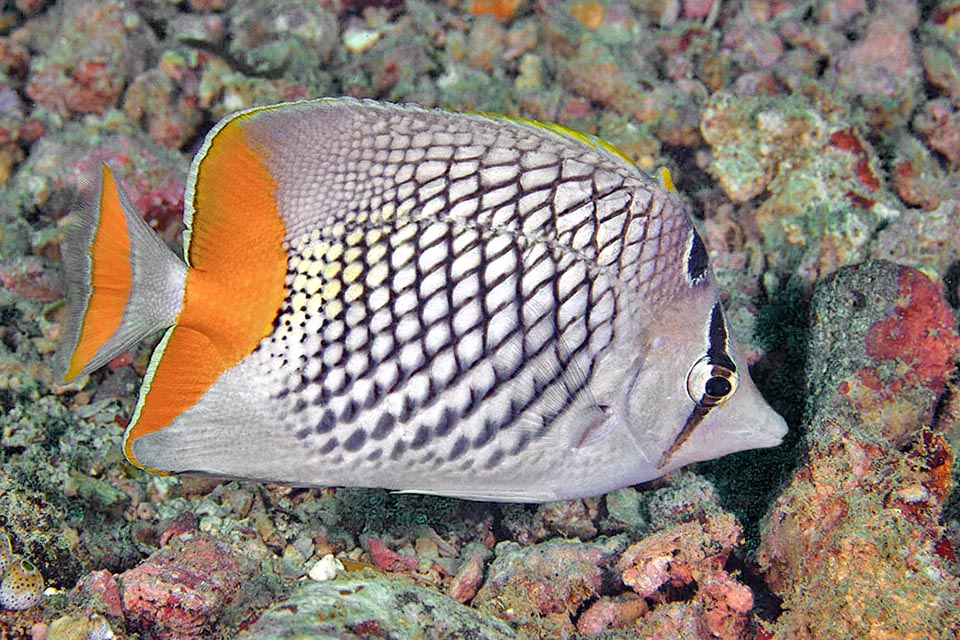
14 cm long at most, with a squared profile, it distinguishes for the checkered livery formed a by cross hatching that draws a net on the sides © Paddy Ryan
Ecology-Habitat
It swims in the madreporic formations, especially at the border of the reefs, usually at 15-50 m of depth.
Morpho-physiology
Flat, with relatively squared body when the fins are folded back, it reaches the 14 cm at the maximum.
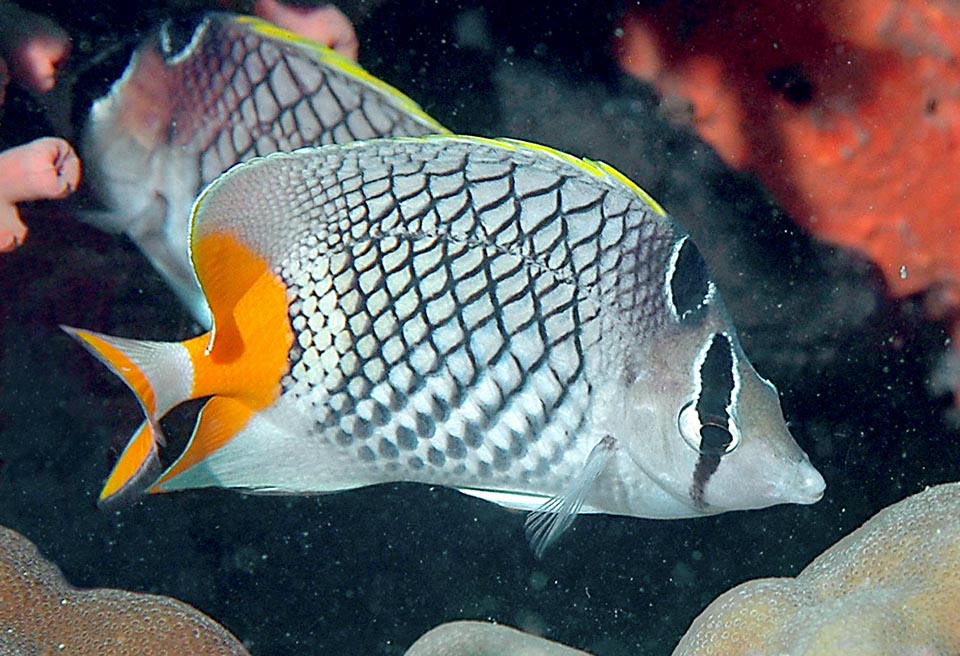
It frequents the madreporic formations, between 15 and 50 m of depth, eating algae, phanerogams and benthic invertebrates © Benoit Lallement
There is only one dorsal fin with 12-14 spiny rays and 20-23 unarmed, whilst the anal has 3 spiny rays and 15-17 soft.
The ventral and the pectoral ones are of modest size and the caudal is more or less blunt.
Starting from the head, after the snout, slightly elongated for looking for the food among the corals, we note a vertical black band edged of white crossing the eye, and higher up, where the back starts, an analogous spot, similarly edged of white. Then, the body is reticulated.
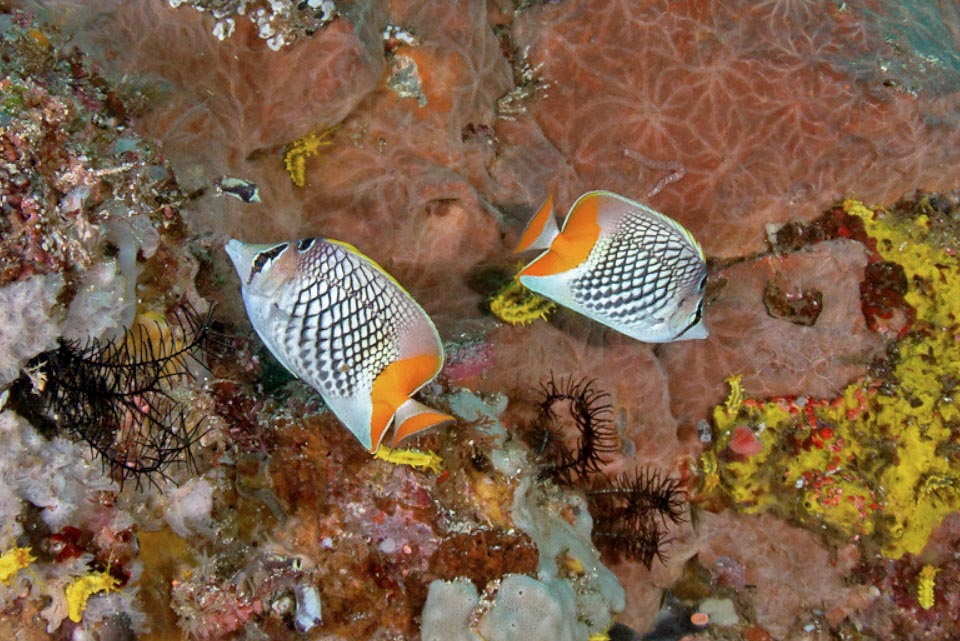
Found in pairs especially in the reproductive time. The fecundation occurs swimming and the eggs are then entrusted to the currents © Tim Cameron
It is the only Chaetodon showing a checkered pattern, with the thin borders over the lateral line and thicker, to transform the clear lozenges into circles, in the lower part, especially towards the tail.
Then, there is a great yellow band, which interests also the final part of the dorsal and anal fins, both ending in a white small border edged of black.
The caudal fin begins as white, and then becomes yellow, as the name of the species states, followed by a white small border with dark contours.
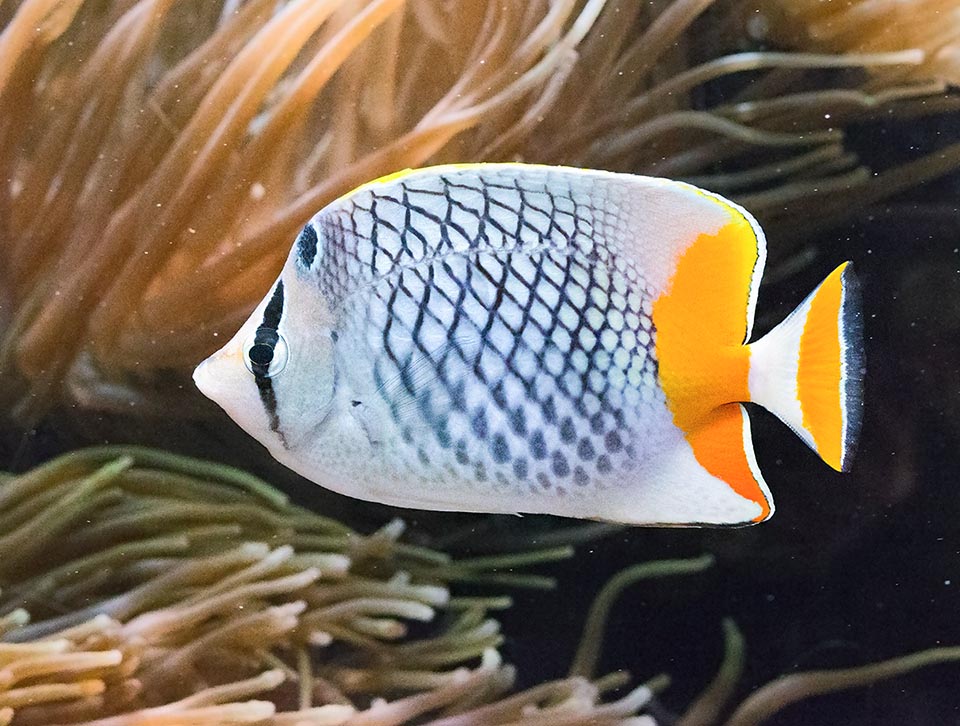
Although it sometimes is caught for the aquaria, thanks to its varied diet and the excellent resilience Chaetodon xanthurus is not an endangered species © Giuseppe Mazza
Ethology-Reproductive Biology
The Seychelles butterflyfish nourishes of seaweeds and of small benthic invertebrates. It lives solitary or paired, especially during the reproductive period. The eggs are pelagic.
Even if, at times, it is fished for the domestic aquaria, it is not by sure an endangered species: it is in fact of no value at all as aliment, the populations may double in 15 months only and the fishing vulnerability index is very low being of 10 per 100 only.
→ For general information about FISH please click here.
→ For general information about BONY FISH please click here
→ For general information about CARTILAGINOUS FISH please click here.
→ To appreciate the BIODIVERSITY of BONY FISH please click here.
→ To appreciate the BIODIVERSITY of CARTILAGINOUS FISH please click here.
